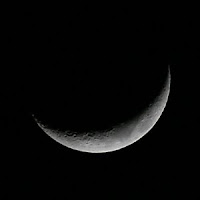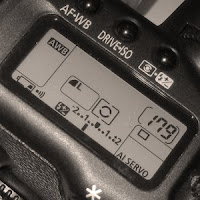
The Blogger or web blog was a great invention and implementation. We bloggers around the world can now communicate, share our stories, share our photography, share our hobbies, write fiction & novels, educate, connect with others and have fun. And yet we need more – we want to publish our posts electronically or in print - that is make eBooks.
Proposal: Blogger Posts to eBook Publishing
In here I would like to propose a project to Google Blogger Team - Blogger Posts to eBook Publishing – the online software which downloads Blogger posts into text & image type template ready for printing or digital publishing in PDF format eBook. There are similar tools like that already, but I have only found one book making software which allows downloading of posts from
Blogger,
WordPress,
LiVEJOURNAL(TM) and
TypePad®, into the textbook format eBook. However, there are limitations – conversion to
PDF [Portable Document Format] is very poor, a format that is very universal and widely used by many thus called portable.
Background Research: Current Available Book Making Software on the Market
I spent endless minutes to search for book making software that would allow me to publish my Blogger posts into eBook. The following listed below are excellent tools, however, they do not offer much of a flexibility to create PDF eBooks from the blog posts. They are free software, however, you must purchase created eBook through their service.
Blurb BookSmart(TM)Software – free download
Layout Types - portfolio, photo book, wedding, guestbook, cookbook, yearbook, journal, text & photos, text only, poetry, blog to book, blank and more.
Output Formats – BookSmart(TM) format, PDF with watermark, uses PDF convertor, however very little detail provided how to.
Comments – despite of very lame conversion to PDF format, software is excellent and highly recommended.
Web Site –
http://www.blurb.com/MyPublisherSoftware – free download
Layout Types – photo book, calendar, cards
Output Formats – MyPublisher format
Comments – recommended, however, no blog to book feature, and no option to save as PDF format; also a bit slow
Web Site –
http://www.mypublisher.com/PhotoInPress BookDesignerSoftware – free download
Layout Types – photo book with text
Output Formats – BookDesigner format and ability to print to PDF [Adobe Distiller]
Comments – very basic software
Web Site –
http://www.photoinpress.ca/LuluSoftware – online, must register
Layout Types – anything you can imagine
Output Formats – must find out
Comments – excellent online book making or other
Web Site –
http://www.lulu.com/Have I done my homework? I think I did, unless I didn’t use correct keywords to search for book making software. However, don’t be surprised with Blurb SmartBook(TM), they offer some amazing formats and layouts if you want to publish, print and share your content.
View an example of my eBook I manually created in MS PowerPoint –
Story Blob StoriesProcess Flow from File/Blogger Post to eBook
[Step 1] Run Google Book Making Software
[Step 2] Choose Book Size & Style
[Step 3] Create Cover Page, back and front, and insides
[Step 4] Choose Layout [text only, text & images]
[Step 5] Choose Theme
[Step 6] Upload Content from My Computer or Blogger
[Step 7] Insert Page Numbering, Additional Footer Information, Header
[Step 8] Edit (Change Layouts of Individual Pages, Insert more text, Insert images, Page Numbering, Footer, Header)
[Step 9] Generate Table of Contents
[Step 10] Generate Index, Tags, or Keywords
[Step 10] Save as PDF
Optional Processes for Selling and Printing
[Step 12] Submit to Google Bookstore
[Step 13] Find Local Printer
[Step 14] Request Print Copy
Libraries [optional]
[1] Library of Preset Layouts / Ability to Create from Scratch
[2] Library of Preset Themes / Ability to Create from Scratch
[3] Library of Fonts
[4] Library of References – add references database to be used in the eBook
Benefits[1] One happy blogger – me, and probably many more out there.
[2] Reduced shipping / international charges to the end customer because ability to find local printer.
[3] Due to better printing equipment for end customers, printing companies are closing down. This may open new on demand printing options to small printing companies.
ConclusionTo summarize all above, the request is simple, ‘idiot proof’ book making software, reliable, fast and automated that has ability to pull out files from My Computer / Blogger and generate an eBook, just like Blurb SmartBook(TM). However, in my case I rather pay for the software, than have free software and pay for each print. We are nearly digital society, so let’s save some trees, thus digital copies, or print copies on demand.
Dear Blogger Team:
I hope you can review my proposal and consider adding this item to your project list. Should you need any help, you know where I am. As you can see this is not a new concept, however, may be excellent new addition to Google Labs. Thank you. We all know that when we do cook red meat, turkey or chicken in the water, all kinds of stuff is generated, especially blood residues from red meat and foam from the turkey or chicken. Veggies just in general have sprays and other stuff on them. Well, the best way to take that at least partially is to change the first water all together. Simply take smaller pot and pre-boil red meat, turkey, chicken or vegetables for few minutes. In parallel, fill other pot with desired amount of water and start heating up. Once pre-boiled, drain water and rinse your meat or veggies with fresh water to remove any unwanted residues. Preferably use filtered water. Once this is done, just place it in the fresh water and cook as you wish.
We all know that when we do cook red meat, turkey or chicken in the water, all kinds of stuff is generated, especially blood residues from red meat and foam from the turkey or chicken. Veggies just in general have sprays and other stuff on them. Well, the best way to take that at least partially is to change the first water all together. Simply take smaller pot and pre-boil red meat, turkey, chicken or vegetables for few minutes. In parallel, fill other pot with desired amount of water and start heating up. Once pre-boiled, drain water and rinse your meat or veggies with fresh water to remove any unwanted residues. Preferably use filtered water. Once this is done, just place it in the fresh water and cook as you wish.




